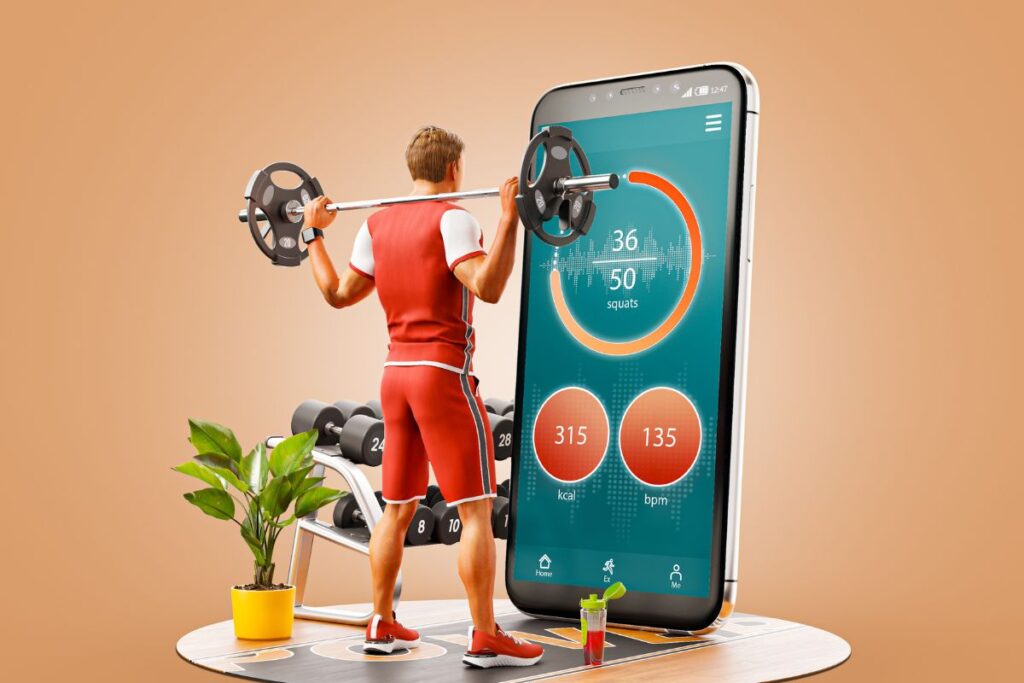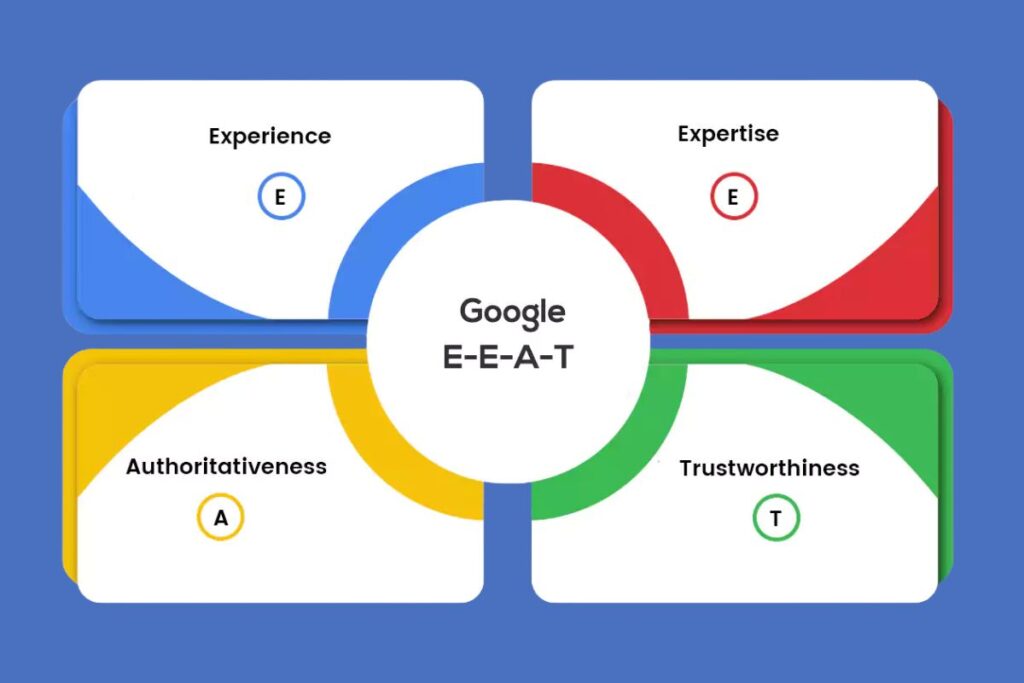Fit in Your Pocket: The Top Fitness Apps That Are Crushing It in 2025

In an era dominated by technology, fitness has undergone a major transformation. Gone are the days when you had to sign up for a gym membership or rely on pricey personal trainers to stay in shape. Today, fitness apps are revolutionizing the way people approach their health and wellness goals. From offering personalized workout plans to tracking nutrition, these apps have become indispensable tools for anyone looking to improve their fitness levels, no matter where they are. With 2025 well underway, the fitness app market has continued to flourish, offering more sophisticated features, integration with wearables, and a heightened focus on user experience. Whether you’re a seasoned athlete or a fitness newbie, there’s an app designed to help you achieve your goals. In this article, we’ll dive into the top fitness apps that are crushing it in 2025 and how they’re reshaping the fitness landscape. Why Fitness Apps Are More Popular Than Ever Fitness apps have come a long way since their inception. Originally, they were simple tools that allowed users to track their workouts or log their meals. Today, they offer comprehensive health solutions that include virtual coaching, real-time feedback, integration with wearables, and even community support. Here’s why fitness apps are a must-have: Now, let’s take a closer look at the best fitness apps that are setting the standard in 2025. 1. MyFitnessPal: A Comprehensive Health Companion Fitness apps don’t get more comprehensive than MyFitnessPal. Known for its extensive food database and simple user interface, MyFitnessPal has become a household name in the fitness industry. In 2025, MyFitnessPal continues to be one of the top apps for tracking nutrition, exercise, and overall wellness. Key Features: Why It’s Crushing It: MyFitnessPal has mastered the art of personalization and integration. Its vast database and seamless connectivity with other fitness apps and wearables make it a go-to choice for anyone serious about their health. 2. Peloton: Bringing the Studio to Your Home Peloton is a name synonymous with high-energy workouts, and it’s not just for cycling anymore. In 2025, Peloton has evolved into a full-blown fitness platform, offering everything from yoga to strength training to outdoor running sessions. Key Features: Why It’s Crushing It: Peloton has successfully captured the spirit of community in fitness. Whether it’s competing on a leaderboard or participating in live classes, it fosters a sense of motivation and excitement that many other fitness apps lack. 3. Strava: The Athlete’s Social Network For athletes who want to track their running, cycling, and other endurance sports, Strava is the app to beat. Strava has built a loyal following of cyclists, runners, and triathletes, and in 2025, it remains a key player in the fitness app market. Key Features: Why It’s Crushing It: Strava’s emphasis on community and competition is what sets it apart from other fitness apps. It’s not just about tracking your workouts; it’s about joining a global community of like-minded athletes. 4. Fitbit: The Classic Fitness Tracker Meets Smart Health Fitbit has been a leader in the wearable fitness space for years, but its accompanying app has only grown stronger. In 2025, Fitbit continues to be one of the best fitness apps for tracking a variety of health metrics, thanks to its advanced features and integration with its fitness trackers. Key Features: Why It’s Crushing It: Fitbit’s integration with its wearable technology makes it a powerhouse. It’s not just about tracking workouts—it’s about understanding your health holistically. 5. Aaptiv: Virtual Personal Trainer in Your Pocket Aaptiv is one of the most popular fitness apps for those looking for audio-based workouts that feel like you have a personal trainer guiding you through each exercise. Whether you’re running, cycling, or doing yoga, Aaptiv’s curated classes are designed to help you crush your fitness goals. Key Features: Why It’s Crushing It: Aaptiv’s focus on audio-guided workouts allows users to stay present and focused during their workouts, making it perfect for people who want a personal training experience without the distractions of video. Final Thoughts: Top Fitness Apps That Are Changing the Game As we look ahead to 2025 and beyond, it’s clear that fitness apps will continue to evolve and integrate new technologies. Whether you’re looking to lose weight, build muscle, improve endurance, or simply stay active, there’s an app that can help you achieve your goals. From tracking workouts to offering personalized meal plans to connecting with a community of like-minded individuals, these fitness apps are proving to be indispensable tools for improving health and wellness. The fitness app landscape is thriving, and it’s exciting to see how these tools will continue to empower individuals around the world to take control of their fitness journeys. Whether you’re a fitness enthusiast or just getting started, there’s no excuse not to take advantage of the powerful resources available at your fingertips. For more insights, follow The Business Tycoon
Content That Commands: How to Build Authority and Rule Your Niche

In the ever-evolving world of digital marketing, authority isn’t just a buzzword it’s the cornerstone of lasting success. To truly stand out in today’s saturated online space, businesses and content creators must focus on building content authority that resonates, engages, and earns trust. This blog explores how content that commands authority can help you dominate your niche, earn top rankings, and foster genuine brand loyalty. What is Content Authority? Content authority refers to the perception of your content as trustworthy, reliable, and knowledgeable within your industry or niche. When search engines and users alike recognize your brand as a thought leader, they are more likely to return, link to, and share your content. Establishing this trust takes time and a strategic approach, but the rewards are immense. Why Building Content Authority Matters Key Pillars of Building Content Authority 1. Deep Audience Understanding You can’t build authority without first understanding who you’re talking to. Define your target audience through personas, research, and analytics. Tailor your tone, content formats, and topics to align with their needs, preferences, and search behavior. 2. Publish High-Quality, In-Depth Content Surface-level content no longer cuts it. To be recognized as an authority, you must: Building content authority begins with going beyond fluff and digging into substance. Quality beats quantity every time. 3. Consistent Publishing Schedule Publishing sporadically won’t help you stay top of mind. Create and stick to a content calendar to ensure you’re consistently delivering fresh, relevant insights. This rhythm signals to your audience and search engines that you are active and invested in your niche. 4. E-E-A-T Principles (Experience, Expertise, Authoritativeness, Trustworthiness) Google’s E-E-A-T framework has become essential in ranking algorithms. Ensure your content reflects: Integrating these pillars directly supports building content authority that meets search engine expectations. 5. Strategic Internal and External Linking Linking to other authoritative content (both your own and reputable third-party sources) helps validate your information and improve SEO. Internal links guide users to related topics and keep them engaged longer. 6. Guest Blogging and Collaborations Partnering with other authoritative figures or platforms extends your reach and enhances your perceived credibility. Guest blogs, interviews, podcasts, and joint webinars are excellent ways to build authority by association. Formats That Help Build Authority Blog Posts Long-form, evergreen blog posts that delve deeply into niche topics are fantastic authority builders. Incorporate visuals, infographics, and citations to boost credibility. Whitepapers and Ebooks These provide in-depth insight and offer an opportunity to collect leads through gated content while demonstrating your command over a subject. Case Studies and Success Stories Showcasing real-world results builds confidence in your expertise. It’s proof that you don’t just talk the talk—you walk the walk. Webinars and Video Content Video is engaging, accessible, and often more persuasive. Hosting live or recorded webinars allows you to demonstrate your knowledge and interact with your audience in real time. Email Newsletters Curated content sent directly to subscribers can reinforce your position as a trusted voice, especially when packed with valuable and exclusive insights. SEO Techniques to Enhance Content Authority Each of these methods supports your overarching strategy for building content authority while improving your visibility. Measuring Your Authority Progress How do you know your content authority is growing? Look for: Common Mistakes to Avoid Future Trends in Content Authority Building Final Thoughts Building content authority isn’t a one-and-done activity it’s an ongoing strategy. In a digital world where trust is currency, the brands that invest in authoritative, audience-centric content will not only survive they’ll thrive. Remember: Anyone can publish content. But only those who focus on quality, relevance, and consistency will command the stage, rank at the top, and rule their niche. For more insights, follow The Business Tycoon
What Startups Need to Know About Venture Capital: A Complete Guide for Entrepreneurs

Starting a business is exciting but challenging, especially when it comes to securing startup funding. Venture capital (VC) is one of the most powerful ways for early-stage companies to access the resources they need to grow, scale, and succeed. If you’re a founder looking to understand venture capital, this comprehensive guide will break down the essentials. Understanding the Basics of Venture Capital Venture capital is a type of private equity financing that investors offer to startups and emerging businesses with strong growth potential. Unlike traditional loans, VC funding involves giving up equity in your company in exchange for capital. Venture capitalists are not just betting on your idea; they are betting on your ability to build a scalable and profitable company. Venture capitalists invest with the expectation of high returns, often 10x or more, compensating for the risks they take by supporting businesses without stable revenue streams. Beyond funding, VCs often provide strategic mentorship, business networking opportunities, and a clear growth roadmap. Why Venture Capital is Crucial for Startups For many startups, venture capital can be the key to turning a great idea into a thriving business. Here’s why: However, venture capital isn’t a free pass; it comes with expectations for aggressive growth and active investor involvement. The Venture Capital Ecosystem Explained Understanding the players in the venture capital ecosystem is vital for startup founders: Understanding these roles will help you navigate fundraising conversations more effectively. How the VC Funding Cycle Works Venture capital funding typically flows through several stages: Planning your fundraising strategy around these stages ensures smooth growth and mitigates risks. Angel Investors vs. Venture Capital vs. Private Equity Choosing the right investor depends on your startup’s growth stage, financial needs, and strategic objectives. Preparing Your Startup for Venture Capital Investment 1. Building a Scalable Business Model Scalability is the core of what makes a startup attractive to venture capitalists. Ensure your startup meets these criteria: Without scalability, even a great idea will struggle to raise funds from serious VCs. 2. Perfecting Your Pitch Deck A pitch deck is your startup’s first impression on potential investors. It must clearly highlight: Avoid jargon and focus on data-driven storytelling. Investors need to believe in both your story and your numbers. 3. Understanding the Importance of Traction Traction is often the deciding factor for venture capital investment. Examples of traction include: Traction is your strongest proof of product-market fit and growth potential. Conclusion: Is VC Right for Your Startup? Venture capital can unlock incredible growth opportunities, but it also comes with high expectations for performance, transparency, and collaboration. Understanding the VC landscape, refining your pitch, building a scalable business model, and demonstrating traction will significantly improve your chances of success. If you’re seeking rapid growth and are prepared for the commitment that comes with equity investment, venture capital could be the perfect partner for your startup journey. Frequently Asked Questions About Venture Capital for Startups Q1: When should a startup seek VC?A: When you have a validated product, early traction, and a scalable business model that requires significant funding to grow rapidly. Q2: What do venture capitalists look for in a startup?A: Strong founding team, large addressable market, proven traction, clear business model, and a scalable product. Q3: How much equity do VCs typically take?A: It varies by stage, but early-stage VCs often take between 15%-30% equity in exchange for their investment. Q4: Can a startup get VC funding without revenue?A: Yes, especially at the Seed or Series A stage, if you demonstrate strong product-market fit, traction, and potential for rapid growth. Q5: What is the difference between VC and private equity?A: VC typically focuses on early to mid-stage startups, while private equity targets mature businesses for buyouts or restructuring. For more insights, follow The Business Tycoon
Routines That Reboot: How Daily Wellness Rituals Are Changing Lives

In a fast-paced world where stress and burnout are common, many people are rediscovering the power of wellness routines. These daily habits are not just about physical health—they focus on mental, emotional, and spiritual well-being too. As we move into 2025, it’s clear that wellness routines have become a vital component of living a balanced and fulfilling life. Whether you’re an entrepreneur, a stay-at-home parent, or a student, adopting a wellness ritual can reboot your mindset, increase productivity, and improve your overall happiness. 1. Morning Mindfulness: Starting Your Day with Intention The way you begin your day can set the tone for everything that follows. Morning mindfulness is one of the most transformative wellness routines. This can include simple practices like meditation, gratitude journaling, or taking a few minutes to focus on your breath before diving into the hustle of the day. Wellness tip: Set aside 10 minutes each morning to ground yourself. Use apps like Headspace or Calm to guide you if you’re new to the practice. Why it works: Studies show that practicing mindfulness reduces stress, enhances focus, and improves emotional regulation—making it an essential component of a daily wellness routine. 2. Hydration: The Simple Power of Water One of the easiest yet most effective wellness routines is proper hydration. Our bodies are made up of 60% water, and staying hydrated is key for everything from cognitive function to skin health. Wellness tip: Start your day with a glass of water before anything else. Keep a water bottle with you throughout the day to remind you to stay hydrated. Why it works: Dehydration can lead to fatigue, poor concentration, and headaches. Drinking water regularly boosts energy and supports optimal brain function. 3. Daily Movement: Integrating Fitness into Your Life Movement is a key pillar of any wellness routine. Whether it’s stretching, yoga, walking, or a full workout, integrating daily physical activity is essential for your health and well-being. Wellness tip: Aim for at least 30 minutes of exercise every day. Whether it’s a morning jog or a midday yoga session, make movement non-negotiable. Why it works: Exercise reduces anxiety, boosts endorphins, improves mood, and supports cardiovascular health. Even small bursts of activity can make a big difference. 4. Digital Detox: Creating Boundaries with Technology In 2025, we are more connected than ever, and while technology has its benefits, it can also contribute to stress and burnout. A daily digital detox is one of the most powerful wellness routines you can incorporate into your day. Wellness tip: Set boundaries for tech use—perhaps an hour of phone-free time in the morning or an evening off-screen before bed. Why it works: Taking time away from screens helps reduce mental clutter, enhances sleep quality, and fosters real-world connections. 5. Healthy Eating: Nourishing Your Body with the Right Foods What we eat has a direct impact on how we feel. Building a wellness routine around nourishing, balanced meals is one of the most powerful ways to improve energy levels and emotional resilience. Wellness tip: Focus on whole foods like fruits, vegetables, whole grains, and lean proteins. Try to limit processed foods and sugary snacks. Why it works: Nutrition affects mood and cognitive function. Eating the right foods supports brain health, boosts energy, and helps you maintain a balanced emotional state. 6. Journaling for Clarity and Emotional Health Journaling is a wellness routine that allows you to process your thoughts, express emotions, and gain clarity on various aspects of your life. Whether it’s free writing, guided journaling, or setting intentions for the day, this ritual can bring deep emotional benefits. Wellness tip: Spend 10 minutes each day writing down your thoughts, feelings, or goals. Reflect on any challenges you’re facing and brainstorm solutions. Why it works: Writing helps to reduce stress, increase self-awareness, and promote emotional healing by giving you a safe space to process your thoughts. 7. Prioritizing Rest: The Importance of Sleep In the quest for success, sleep is often sacrificed. However, quality sleep is essential for overall wellness. A proper sleep routine not only rejuvenates the body but also restores the mind, enhances memory, and regulates emotions. Wellness tip: Set a consistent bedtime and create a relaxing pre-sleep ritual, such as reading a book or listening to calming music. Why it works: Sleep is crucial for physical and mental restoration. Studies show that people who maintain a regular sleep routine experience better mental clarity, reduced stress, and improved mood. 8. Gratitude Practice: Shifting Your Focus to the Positive A daily gratitude practice is one of the simplest yet most transformative wellness routines. It helps shift your focus away from what’s wrong in your life and directs your attention to what’s going well. Wellness tip: Before going to bed, write down three things you’re grateful for. This habit can train your brain to look for the good, improving your outlook on life. Why it works: Gratitude has been shown to increase happiness, improve sleep, and boost overall well-being by promoting positive emotions. 9. Time for Nature: Connecting with the Outdoors Spending time in nature has numerous mental health benefits. Whether it’s a walk in the park or a hike in the mountains, connecting with the natural world is a powerful wellness ritual. Wellness tip: Try to spend at least 15–30 minutes outside each day, whether it’s sitting in the sun, going for a walk, or simply breathing in fresh air. Why it works: Nature reduces stress, lowers blood pressure, and improves cognitive function, making it an excellent way to reset during a busy day. 10. Social Connections: Building Meaningful Relationships Wellness routines don’t just focus on individual health; they also emphasize connection with others. Building a support network of family, friends, or colleagues can help provide emotional stability and a sense of belonging. Wellness tip: Make time for regular social interactions. Whether it’s a virtual coffee date or a weekend catch-up, invest in meaningful relationships. Why it works: Positive social connections promote happiness, reduce stress, and provide a sense of purpose.
Mind Over Matter: 10 Mental Health Habits for a Resilient 2025

In a world that’s moving faster than ever, mental resilience isn’t just a luxury—it’s a necessity. The year 2025 promises continued advances in technology, globalization, and workplace demands, all of which require a robust mental foundation. Whether you’re an entrepreneur, a remote worker, a student, or a parent, adopting strong mental health habits is key to navigating life with clarity and confidence. Here are 10 essential mental health habits to cultivate a resilient mindset in 2025. Here are 10 Mental Health Habits for a Resilient 2025: 1. Start Your Day with Mindful Intention How you begin your morning often sets the tone for your entire day. One of the most powerful mental health tips is to start with mindful practices like meditation, journaling, or a gratitude ritual. Just 10 minutes of deep breathing and reflection can significantly reduce anxiety and increase focus. Pro Tip: Use mindfulness apps such as Headspace or Calm to guide your sessions. 2. Prioritize Quality Sleep Sleep isn’t a luxury—it’s a mental health necessity. With hybrid work structures and digital devices around the clock, maintaining a consistent sleep routine is more important than ever. Sleep helps regulate mood, improves cognitive function, and enhances emotional resilience. Mental health tip: Aim for 7–9 hours of uninterrupted sleep, and avoid screens at least one hour before bed. 3. Move Your Body Daily Physical activity is a direct line to better mental health. Exercise releases endorphins, reduces stress, and combats depression. Whether it’s yoga, walking, dancing, or strength training, make movement a non-negotiable part of your day. Mental health tip: Even 20 minutes of moderate exercise can significantly improve mood and energy levels. 4. Digital Detox for Mental Clarity In 2025, our digital lives are only becoming more consuming. Taking regular breaks from screens can improve focus and reduce feelings of overwhelm. Mental health tip: Schedule at least one day a week as a tech-free day or establish phone-free zones in your home. 5. Nourish with Brain-Boosting Foods What you eat affects how you feel. A diet rich in omega-3s, antioxidants, whole grains, and greens supports not only your physical health but your emotional well-being too. Mental health tip: Include foods like salmon, blueberries, nuts, and dark leafy greens in your daily meals. 6. Practice Emotional Regulation Emotional intelligence—the ability to manage your emotions and respond rather than react—is a skill that pays off in every area of life. Techniques such as deep breathing, labeling your feelings, or cognitive reframing can help you stay grounded in stressful moments. Mental health tip: Keep a mood journal to recognize patterns and triggers. 7. Stay Connected with Real Human Interaction The rise of AI and remote work can increase feelings of isolation. Make time for real conversations and face-to-face connections. Social support is one of the strongest buffers against mental health challenges. Mental health tip: Schedule weekly meetups with friends or join a group activity to foster connection. 8. Set Healthy Boundaries Whether it’s work, relationships, or social media, boundaries are essential for mental resilience. Learning to say no and protect your time helps prevent burnout and reduces anxiety. Mental health tip: Use tools like calendar blocking or screen limit settings to take control of your schedule. 9. Seek Professional Support When Needed Therapy and coaching are not just for crisis—they’re for growth. More people in 2025 are embracing mental health services as part of their wellness strategy. Whether you’re dealing with anxiety, grief, or just need clarity, a licensed professional can provide essential tools. Mental health tip: Don’t wait until you’re overwhelmed to reach out. Preventative mental healthcare is the future. 10. Embrace a Growth Mindset Your mindset shapes your reality. Cultivating a belief in your ability to learn, grow, and adapt builds long-term resilience. Challenge your inner critic, celebrate small wins, and stay curious about life. Mental health tip: Use affirmations and reflection exercises to build confidence and adaptability. Final Thoughts Mental wellness in 2025 isn’t just about reacting to stress—it’s about proactively building habits that foster resilience. These ten mental health tips offer a toolkit for navigating the complexities of modern life with strength and optimism. As the world evolves, so should our strategies for staying mentally fit. Remember: your mental health is just as important as your physical health. Make it a priority, and you’ll be better equipped to thrive in any environment the future holds. For more insights, follow The Business Tycoon
Jet-Set, Sustainably: How to Travel the World Without Leaving a Footprint

In an era where climate change headlines dominate the news and carbon emissions are tracked with increasing scrutiny, the concept of “sustainable travel” has transitioned from a niche interest to a global imperative. With the tourism industry accounting for nearly 8% of global carbon emissions, travelers and industry stakeholders alike are seeking eco-conscious alternatives. This blog explores how the rise of sustainable travel is reshaping how we explore the world ensuring our adventures enrich both us and the planet. Understanding Sustainable Travel Sustainable travel refers to tourism that minimizes negative environmental, social, and economic impacts. It also aims to generate benefits for local communities and preserve cultural heritage. Unlike traditional travel, where convenience and affordability often take precedence, sustainable travel encourages mindful choices—such as selecting eco-certified accommodations, supporting local economies, and reducing one’s carbon footprint. The Environmental Impact of Tourism Tourism has a sizable environmental footprint: Sustainable travel offers a path to mitigate these issues while still allowing people to connect with different cultures and environments. Planning Your Sustainable Adventure Sustainable Travel in Transportation Transportation accounts for a major part of tourism-related carbon emissions. Here’s how to make greener choices: Support Local Economies Sustainable travel isn’t just about the environment; it also emphasizes economic and social sustainability: Technology and Innovation in Sustainable Travel Modern tools and apps make it easier than ever to plan an eco-conscious trip: Eco-Conscious Activities to Consider Some experiences are inherently more sustainable than others: Challenges of Sustainable Travel Despite the growing interest, sustainable travel faces several hurdles: Travelers must stay informed and critical, seeking out verified eco-certifications and reading reviews. The Role of Businesses and Governments Corporations and governments also play a crucial role in enabling sustainable travel: How Individuals Can Make a Difference Every traveler has the power to make impactful decisions: Sustainable Travel is the Future As we move further into the 21st century, sustainable travel is becoming less of an option and more of a necessity. With conscious choices, travelers can help preserve the beauty and integrity of the places they love to visit. Whether it’s hiking through protected national parks, staying in solar-powered lodges, or dining at zero-waste restaurants, sustainable travel ensures that our explorations today won’t cost the Earth tomorrow. Final Thoughts Sustainable travel is about more than reducing emissions it’s a holistic approach to exploring the world with respect, responsibility, and reverence. As eco-consciousness becomes a standard expectation rather than a luxury, businesses, governments, and travelers must all collaborate to minimize tourism’s footprint. With the right planning, mindset, and tools, we can embrace the joys of travel while safeguarding the planet. So pack your bags not with plastic, but with purpose and jet-set sustainably. For more insights, follow The Business Tycoon
Trust Is the New Ranking Factor: 7 SEO Trust Signals You Can’t Ignore

In the constantly shifting world of search engine optimization, one truth has become increasingly clear: trust is not just a buzzword; it’s a decisive ranking factor. Google has evolved far beyond keywords and backlinks. In 2025 and beyond, trust signals in SEO are what separate high-ranking, high-performing websites from those buried in search results. If you want your website to rank, convert, and thrive, understanding and optimizing for trust is no longer optional—it’s essential. This blog will uncover the seven most critical trust signals in SEO, why they matter, and how you can integrate them into your digital strategy to boost visibility and credibility. 1. Authoritativeness of Content Creators Google is prioritizing the E-E-A-T framework: Experience, Expertise, Authoritativeness, and Trustworthiness. At the center of this evolution is the credibility of the person behind the content. Who is writing your blogs, whitepapers, or guides? Trust signals in SEO begin with showcasing your authors’ credentials. Add bios with qualifications, link to authoritative social profiles, and display contributions on reputable platforms. When Google sees a content creator with a digital footprint of knowledge and experience, it rewards them with higher rankings. How to Boost This Signal: 2. High-Quality Backlinks from Trusted Domains The days of mass backlinking are over. What matters now is the quality and relevance of those links. Earning backlinks from government websites, educational institutions, top-tier media outlets, or well-respected industry blogs acts as a digital vote of confidence. These are powerful trust signals in SEO. How to Boost This Signal: 3. Secure and User-Friendly Website (HTTPS and UX) First impressions count, and a slow, insecure, or hard-to-navigate website erodes trust immediately. Google has confirmed that HTTPS is a ranking factor, and user experience (UX) directly influences SEO performance. A secure website shows that you take your users’ safety seriously. Combine this with intuitive navigation, fast loading times, and mobile optimization, and you’re sending out some of the strongest trust signals in SEO. How to Boost This Signal: 4. Transparent and Comprehensive Contact Information Would you trust a business that doesn’t provide a phone number, address, or even an email? Neither would Google. Transparency in your contact information shows legitimacy and accountability. Search engines scan your website to ensure it’s connected to a real entity. This includes business addresses, phone numbers, and team directories. These details are considered significant trust signals in SEO. How to Boost This Signal: 5. Consistent NAP Citations and Business Listings Name, Address, and Phone Number (NAP) consistency across the web is crucial, especially for local SEO. Discrepancies across platforms like Google My Business, Yelp, and social media can confuse users and search engines alike. Consistency in NAP data reflects a trustworthy and established business. It’s one of the often-overlooked yet impactful trust signals in SEO. How to Boost This Signal: 6. User Reviews and Testimonials Social proof is a massive trust booster, and Google knows it. Positive reviews not only influence customer decisions but also help search engines gauge the quality of your business. Sites with a consistent flow of authentic, high-quality reviews often rank higher. Testimonials and user ratings act as external trust signals in SEO that validate your brand’s credibility. How to Boost This Signal: 7. Content Accuracy and Transparency With the rise of misinformation, Google is increasingly rewarding content that is well-cited, factual, and regularly updated. Accurate, transparent content builds reader trust, which ultimately signals trustworthiness to search engines as well. Fact-checking, linking to credible sources, and disclosing conflicts of interest (e.g., affiliate links) play a pivotal role in building trust signalvs in SEO. How to Boost This Signal: Also Read: Business SEO Strategies That Work: 10 Proven Tactics for Higher Google Rankings Speak Up! Mastering Voice Search SEO Before Your Competitors Do Let’s Talk Keywords: Crafting Conversational SEO That Ranks in 2025 Lights, Camera, Rank! How to Boost Your Video SEO in 2025 E-E-A-T Explained: Building Expertise and Trust in Google’s Eyes Pixels with Purpose: Image SEO Strategies That Get You Found Fast Search by Sight: Mastering Visual SEO for E-Commerce and Beyond Bringing It All Together In 2025, SEO is no longer just about keywords and links—it’s about integrity, transparency, and credibility. Trust signals in SEO are the invisible threads weaving your brand into the digital fabric of reliability and relevance. By focusing on the seven trust signals discussed above, you position your website as a reputable, authoritative, and trustworthy destination for both users and search engines. Whether you’re running a blog, an e-commerce site, or a service-based platform, investing in these elements will yield long-term SEO rewards. Final Tip: Don’t just optimize for algorithms, optimize for humans. Build real trust, and search rankings will follow.
E-E-A-T Explained: Building Expertise and Trust in Google’s Eyes

In the ever-evolving world of digital marketing and search engine optimization (SEO), the key to long-term visibility and sustainable growth lies in aligning your content with Google’s quality guidelines. One of the most critical concepts that has emerged in recent years is E-E-A-T — which stands for Experience, Expertise, Authoritativeness, and Trustworthiness. Understanding and implementing E-E-A-T SEO strategies is essential for businesses and content creators aiming to rank higher and establish long-term digital authority. What is E-E-A-T? E-E-A-T originates from Google’s Search Quality Evaluator Guidelines, which help human evaluators assess the quality of search results. Originally introduced as E-A-T (Expertise, Authoritativeness, and Trustworthiness), Google updated the concept by adding an additional “E” for Experience in late 2022. This addition reflects Google’s growing emphasis on content that demonstrates first-hand, real-world experience. Each component of E-E-A-T plays a specific role: Understanding how to build and showcase these elements is at the core of effective E-E-A-T SEO strategies. Why E-E-A-T Matters in 2025 Google’s algorithms are constantly evolving to deliver the most helpful and accurate content to users. In 2025, as AI-generated content becomes more prevalent, the need for E-E-A-T SEO strategies has intensified. Google wants to ensure that high-ranking content comes from credible sources, especially in industries like finance, health, law, and news—commonly referred to as YMYL (Your Money or Your Life) niches. When Google can determine that a page demonstrates high levels of experience, expertise, authority, and trust, it’s more likely to rank that page higher in search results. E-E-A-T is not a direct ranking factor but influences how Google evaluates the quality and relevance of your content. Building E-E-A-T into Your Content Strategy 1. Showcase Author Credentials To support E-E-A-T SEO strategies, ensure that every piece of content is clearly authored. Add detailed author bios with qualifications, certifications, professional experience, and social proof. Link to their profiles or other work to showcase authority and credibility. 2. Create In-Depth, Expert Content High-quality, well-researched content remains a pillar of effective SEO. Go beyond surface-level blog posts and dive deep into topics with comprehensive guides, whitepapers, and case studies. Use reliable sources and data to support claims. 3. Include First-Hand Experience Incorporating first-hand insights and unique perspectives significantly strengthens the Experience element. Whether it’s product reviews, service case studies, or personal stories, Google rewards content that reflects real-world experience. 4. Optimize On-Page SEO with Trust Elements Include trust signals such as HTTPS security, clear contact information, privacy policies, and terms of service. Display certifications, industry memberships, or awards. These reinforce your commitment to user safety and transparency. 5. Encourage Positive Reviews and Mentions Building authority and trust doesn’t stop on your website. Encourage satisfied customers to leave positive reviews on Google My Business, Yelp, and other platforms. Secure guest posts, interviews, or mentions from reputable sources in your industry to strengthen off-page SEO. 6. Leverage Structured Data Structured data (schema markup) helps Google understand the context of your content. Use schema types like Article, Author, Product, and Review to highlight essential information. This enhances visibility and supports E-E-A-T SEO strategies. 7. Regularly Update Content Outdated content can harm your credibility. Regularly audit your website to refresh and update older posts. Add new data, correct inaccuracies, and improve readability to ensure the content reflects the latest knowledge and developments. E-E-A-T in Different Industries Healthcare If you run a healthcare website, Google demands the highest standards of E-E-A-T SEO strategies. Content must be written or reviewed by certified professionals. Adding medical disclaimers and clearly linking to credible sources like PubMed or CDC is crucial. Finance Financial content must come from qualified professionals with clear disclosures and transparent practices. Ensure all calculators, tools, and advice follow regulatory guidelines and showcase expertise. E-commerce Product pages should include customer reviews, return policies, secure checkout, and brand trust elements. Add detailed product descriptions and highlight third-party endorsements or sustainability practices. Education For educational websites or course providers, list instructor credentials, affiliations, and accreditation. Include testimonials and data on student outcomes to build trust and demonstrate authority. Tools to Strengthen E-E-A-T Measuring the Impact of E-E-A-T SEO Strategies While E-E-A-T isn’t a direct ranking factor, you can measure its effectiveness through: If you’re seeing improvements in these areas after implementing E-E-A-T SEO strategies, you’re likely moving in the right direction. Also Read: Business SEO Strategies That Work: 10 Proven Tactics for Higher Google Rankings Speak Up! Mastering Voice Search SEO Before Your Competitors Do Let’s Talk Keywords: Crafting Conversational SEO That Ranks in 2025 Lights, Camera, Rank! How to Boost Your Video SEO in 2025 Future-Proofing Your SEO Strategy with E-E-A-T In 2025 and beyond, Google will continue refining its understanding of content quality. AI content will proliferate, making human expertise and real-world experience even more valuable. By grounding your content strategy in E-E-A-T SEO strategies, you align your site with what Google values most: helpful, credible, and user-focused information. Final Thoughts E-E-A-T is more than just a checklist – it’s a guiding philosophy for creating content that delivers real value to users. In a digital landscape flooded with generic and AI-generated posts, building expertise and trust is your most powerful differentiator. Brands and publishers who invest in E-E-A-T SEO strategies will not only earn higher rankings but also foster long-term loyalty, credibility, and growth. For more insights, follow The Business Tycoon
Pixels with Purpose: Image SEO Strategies That Get You Found Fast
In today’s digital-first world, visuals are no longer just design elements—they are discoverable assets that drive engagement, traffic, and conversions. The evolution of search engines and AI algorithms has elevated the importance of images, making Image SEO not just an enhancement but a necessity. Brands, marketers, and content creators now realize that optimizing images is key to winning online visibility. This article explores powerful, actionable Image SEO best practices that will ensure your visual content gets found fast. Why Image SEO Matters in 2025 Search engines are smarter than ever. With machine learning and visual recognition technologies improving at a rapid pace, search engines like Google can now “see” and understand images more accurately. This shift has intensified the value of image optimization. Image SEO best practices go beyond file names and alt text; they now involve structured data, lazy loading, accessibility, and even image compression without quality loss. Moreover, with the rise of visual search tools like Google Lens and Pinterest Lens, users can now initiate searches using images rather than text. E-commerce brands, fashion retailers, real estate platforms, and travel companies are seeing massive benefits from embracing visual SEO. Implementing Image SEO best practices is no longer optional—it’s a competitive advantage. The Anatomy of Image SEO Best Practices Let’s break down the core components of effective Image SEO and how you can implement them: 1. Descriptive Filenames Before uploading your image, rename the file using descriptive, keyword-rich filenames. Avoid generic names like IMG_1234.jpg—instead, use organic-matcha-green-tea-powder.jpg. This helps search engines understand the image content. 2. Alt Text Optimization Alternative text (alt text) is crucial for both SEO and accessibility. Use concise yet descriptive phrases to define the image. This not only helps visually impaired users but also gives search engines more context about your content. Example: <img src=”organic-matcha-green-tea-powder.jpg” alt=”Organic Matcha Green Tea Powder in Ceramic Bowl” /> Alt text is one of the foundational Image SEO best practices that also supports your ranking in image search results. 3. Image File Size and Compression Large images can slow down your page loading speed—an SEO killer. Use tools like TinyPNG, ImageOptim, or Squoosh to compress images without compromising quality. Lighter images improve UX and reduce bounce rates, directly influencing your SEO rankings. 4. Responsive Images Make sure your images look great on all devices. Use srcset attributes to provide different image sizes for different screen resolutions. Responsive design is a core component of modern Image SEO best practices.cc <img src=”tea.jpg” srcset=”tea-small.jpg 480w, tea-medium.jpg 800w, tea-large.jpg 1200w” sizes=”(max-width: 600px) 480px, (max-width: 900px) 800px, 1200px” alt=”Green tea with steam rising” /> 5. Lazy Loading Enable lazy loading for images to enhance performance. This approach loads images only when they’re about to enter the viewport, reducing initial page load time. In HTML5: <img src=”tea.jpg” loading=”lazy” alt=”Hot green tea in white cup” /> 6. Structured Data for Images Schema markup helps search engines understand your content contextually. Use ImageObject schema to enhance your image-rich content for visibility in search results. Example (JSON-LD): { “@context”: “https://schema.org”, “@type”: “ImageObject”, “contentUrl”: “https://www.example.com/photos/tea.jpg”, “description”: “Aerial view of green tea powder in ceramic bowl” } 7. Captions and Context Images surrounded by relevant text perform better in SEO. Use captions and body content to contextualize your visuals. This is one of the more overlooked Image SEO best practices but plays a crucial role. 8. CDN and Image Hosting Deliver your images via a Content Delivery Network (CDN) to improve load speeds for global users. Tools like Cloudflare, Fastly, and Akamai ensure your images are served from the closest server to the user. 9. Image Sitemap Include your images in XML sitemaps so search engines can index them better. This improves the discoverability of your media assets. <image:image> <image:loc>https://www.example.com/images/tea.jpg</image:loc> <image:caption>Organic green tea powder in bowl</image:caption> </image:image> 10. Avoid Decorative Overload Only use images that add value. Too many non-essential images can clutter your page and hurt load speed. Strategic use of visual content is a key tenet of modern Image SEO best practices. Also Read: Business SEO Strategies That Work: 10 Proven Tactics for Higher Google Rankings Speak Up! Mastering Voice Search SEO Before Your Competitors Do Let’s Talk Keywords: Crafting Conversational SEO That Ranks in 2025 Lights, Camera, Rank! How to Boost Your Video SEO in 2025 How Image SEO Best Practices Impact Different Industries E-Commerce Optimized product images improve conversion rates and organic traffic. Shoppers use image search when looking for specific products. Travel and Hospitality High-quality, optimized visuals of destinations, hotels, and experiences can boost bookings through search discovery. Food and Beverage Mouthwatering visuals can go viral and drive interest when properly optimized for SEO. Fashion and Lifestyle Style and aesthetics are visual-driven. Properly tagged and compressed images keep you top-of-mind and top-of-search. Tools to Implement Image SEO Best Practices 2025 Trends in Image SEO Final Thoughts Image SEO best practices are no longer a checklist; they are a dynamic and strategic necessity. As search engines evolve and visual search becomes second nature for users, your images must be optimized not just for performance but for discovery. Brands that embrace these best practices in 2025 will outpace competitors, delight users, and dominate search results. Incorporate these Image SEO best practices today to ensure your visuals aren’t just seen—but found fast, appreciated, and acted upon. For more insights, follow The Business Tycoon
Search by Sight: Mastering Visual SEO for E-Commerce and Beyond

In a world where images speak louder than words, the way consumers search is rapidly changing. With smartphones and AI-powered tools enabling users to search using images instead of keywords, visual search has evolved into a powerful trend reshaping the future of digital marketing. As this technology becomes more prevalent, businesses—especially in e-commerce—must prioritize visual search optimization to stay ahead of the competition. Understanding Visual Search Visual search allows users to search the web using images rather than text. Platforms like Google Lens, Pinterest Lens, and Bing Visual Search allow users to snap a photo of an item they’re interested in, and receive search results that match or resemble it. This technology relies on machine learning, computer vision, and deep neural networks to interpret images and retrieve relevant data. For e-commerce brands, this means that your product images need to be discoverable and searchable by machines. The better your visual search optimization, the higher your visibility in image-driven queries. Why Visual Search Matters in 2025 The numbers don’t lie. According to a recent study by Insider Intelligence, over 60% of millennials and Gen Zers prefer visual search over other methods. Retailers integrating visual search tools have seen a significant increase in conversion rates and average order values. As the trend continues, optimizing for visual search will no longer be optional—it will be essential. Visual content captures attention faster than text. In 2025, as consumers demand instant gratification and seamless user experiences, visual search optimization will be the key to delivering faster, more relevant results. Key Industries Leveraging Visual Search While fashion and home décor are currently leading the charge, many industries stand to benefit from visual search: Each of these sectors can enhance customer experience and sales by investing in visual search optimization. Steps to Master Visual Search Optimization To capitalize on the rising tide of visual search, companies must adopt a well-rounded SEO strategy that includes the following steps: 1. High-Quality, Relevant Images Start by ensuring all your product or content images are high-resolution and clear. Avoid cluttered or overly edited images that might confuse AI recognition systems. 2. Use Descriptive Filenames Before uploading, name your image files descriptively and include target keywords. For example, use “black-leather-handbag.jpg” instead of “IMG12345.jpg.” 3. Add Alt Text with Target Keywords Alt text helps visually impaired users, but it also plays a crucial role in visual search optimization. Write clear, concise descriptions using relevant keywords. 4. Implement Structured Data Using schema markup on your product pages helps search engines understand what’s in your images. Include information like price, availability, and brand details to improve visibility. 5. Optimize Image Load Speed Fast-loading images are critical for both user experience and SEO rankings. Use tools like WebP format and lazy loading to improve site speed. 6. Create an Image Sitemap An image sitemap tells search engines which images to crawl on your website. This ensures that none of your product or promotional images are overlooked. 7. Use AR and 3D Visualization Augmented Reality and 3D product visualization offer immersive shopping experiences and are becoming part of visual search technology. Businesses that invest early in these technologies will enjoy better visual search optimization. Visual Search Optimization on Major Platforms Different platforms handle visual search differently. Here’s how to enhance your visibility on the most popular ones: Google Lens Pinterest Lens Bing Visual Search Being platform-aware ensures that your visual search optimization efforts aren’t wasted. The Role of AI in Visual Search AI is the driving force behind visual search. As machine learning algorithms improve, the accuracy and speed of visual search results will increase. In 2025, AI will not just match images to results but anticipate user intent based on past searches, preferences, and behavior patterns. Businesses that leverage AI-enhanced tools for visual search optimization will outperform their competitors in both reach and revenue. Real-World Examples Challenges in Visual Search Optimization Despite its promise, visual search comes with challenges: Addressing these hurdles requires continuous education, investment in tech, and strategic content planning. Also Read: Business SEO Strategies That Work: 10 Proven Tactics for Higher Google Rankings Speak Up! Mastering Voice Search SEO Before Your Competitors Do Let’s Talk Keywords: Crafting Conversational SEO That Ranks in 2025 Lights, Camera, Rank! How to Boost Your Video SEO in 2025 Future Outlook By 2025, visual search is expected to become a mainstream search behavior. E-commerce platforms that ignore visual search optimization will struggle to attract and retain users. On the other hand, those who master it will benefit from increased visibility, higher engagement, and better conversion rates. What’s Next? Conclusion In the competitive world of digital commerce, visibility is everything. As search evolves from text to visuals, businesses must adapt their strategies accordingly. Mastering visual search optimization not only future-proofs your brand but also opens up a more engaging and seamless shopping experience for your customers. Whether you’re an e-commerce giant or an emerging brand, now is the time to get serious about the power of sight. For more insights, follow The Business Tycoon
